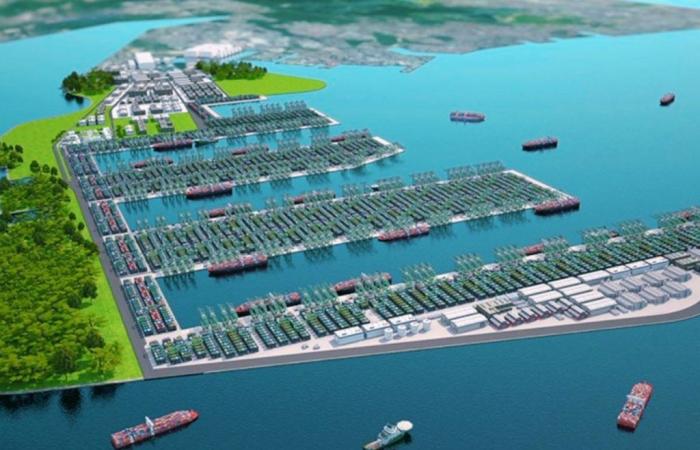
A promising start for the largest fully automated port in the world.
The Port of Tuas, inaugurated with great fanfare by Singapore on September 1, 2022, is poised to become the largest and most modern port in the world. In 2040, this mega-project plans to accommodate up to 65 million TEU containers (20-foot equivalent, standard unit for containers), almost double the 37.5 million TEUs handled in 2021. In comparison, the Pasir Panjang terminal (the current port of Singapore), which has 37 berths, has a capacity of 34 million TEUs per year.
Read also:
The port of Tuas, a port project that will mark history
Tuas Port, when completed, will occupy approximately 1,337 hectares of land, the equivalent of 3,300 football fields. It will have 66 berths stretching over 26 kilometers, capable of accommodating the world’s largest container ships. This expansion will help strengthen Singapore’s central position on the global stage, a situation the city-state already knows well, seeing around 40% of global traffic pass along its coasts.
The most pharaonic project in the Mediterranean could exceed 104.7 billion euros and create 750,000 jobs for Egypt
Tuas Port cost could exceed $40 billion
The development of Tuas Port spans four phases. The backfilling work for phase 1 began in February 2015 and was completed in November 2021. This work mobilized a total of 34 million man-hours and involved more than 450 companies. Phase 2 began in March 2018 with the manufacture of 227 caissons, as high as 10-story buildings, forming a 9.1 kilometer quay wall. Planning for Phase 3 is also underway. The total cost of this pharaonic construction could exceed 40 billion dollars (36.5 billion euros) according to some estimates.
The port operations revolution
With the 2027 launch of the phase, the port will have 21 deep-water berths with an annual handling capacity of 20 million TEUs. Operations of the first two berths began in December 2021 and three more are planned for the end of 2022. PSA, in charge of managing the port of Singapore, plans to transfer all its operations from the Tanjong Pagar, Keppel and Brani terminals to Tuas by 2027, with consolidation of Pasir Panjang terminal operations planned for the 2040s.
An economic “world” within reach of the port
Tuas will be the center of an integrated ecosystem covering vibrant business and industrial districts in the Western Region, such as Jurong Lake District, Jurong Innovation District and Tuas Industrial District. This integration will enable complementary sectors that frequently interact with the port to more easily benefit from its global connectivity, unlocking synergies in the supply chain and enabling more efficient trade flows.
A fully automated port?
The port of Tuas is heralded as one of the first fully automated ports in history. The Port Authority of Singapore is working with port operators to drive the adoption of new digital technologies. It is working in particular on a new generation maritime traffic management system with a digital platform: digitalPORT@SGTM, in order to improve the management of its new flagship. For the robotization of the port itself, automated cranes and automated guided vehicles will be used to transport containers, all managed remotely from the Tuas Port control center. This also raises a lot of questions about the fate reserved for the 150,000 port employees…
This colossus is the longest cable-stayed bridge in the world and it serves an “exotic” island of only 5,000 inhabitants at a cost of almost 900 million euros.
In this article we return to one of the most grandiose projects that the Earth currently knows: the construction of the future fully automated port of Tuas, which upon completion will be the largest in the world in 2040.
Source : mpa.gov.sg





